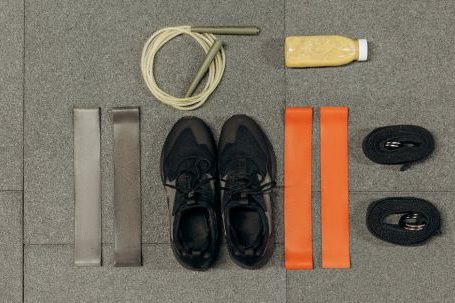Functional strength training has gained popularity in recent years as an effective way to improve overall strength, mobility, and performance in daily activities. Unlike traditional strength training that focuses on isolated muscle groups, functional strength training emphasizes movements that mimic real-life activities. Whether you are a beginner or have some experience with strength training, this guide will provide you with the essential information to get started with functional strength training.
Understanding Functional Strength Training
Functional strength training is all about improving your ability to perform everyday movements with ease and efficiency. It focuses on developing functional muscle strength, which means training your muscles to work together to perform specific tasks rather than isolating individual muscles.
Benefits of Functional Strength Training
1. Improved Performance: Functional strength training enhances your ability to perform activities such as lifting, carrying, pushing, and pulling. By targeting multiple muscle groups, it improves your overall strength and power.
2. Increased Stability and Balance: Functional exercises engage the core muscles, helping to improve stability and balance. This is particularly beneficial for older adults, as it reduces the risk of falls and injuries.
3. Enhanced Joint Health: By training multiple muscle groups simultaneously, functional strength training helps to promote joint stability and mobility. This can alleviate joint pain and reduce the risk of injuries.
Getting Started
Before beginning any exercise program, it is important to consult with a healthcare professional, especially if you have any pre-existing conditions or injuries. Once you have the green light, follow these steps to start your functional strength training journey:
1. Set Clear Goals: Determine what you hope to achieve through functional strength training. Whether it’s improving your overall fitness, increasing your strength, or enhancing your athletic performance, having clear goals will help you stay motivated and focused.
2. Learn the Basics: Familiarize yourself with the foundational movements of functional strength training. These include squats, lunges, pushes, pulls, and rotational exercises. Start with bodyweight exercises before progressing to using weights or resistance bands.
3. Focus on Proper Form: Proper form is crucial in functional strength training to prevent injuries and ensure effective muscle engagement. Take the time to learn and practice the correct technique for each exercise. If needed, seek guidance from a qualified fitness professional.
4. Start Slow and Progress Gradually: Begin with lighter weights or resistance bands and gradually increase the intensity and difficulty of your workouts. This allows your muscles and joints to adapt and reduces the risk of overexertion or injury.
Sample Functional Strength Training Workout
Warm-Up:
– Jog or brisk walk for 5-10 minutes to increase your heart rate and warm up your muscles.
Workout:
1. Squats: 3 sets of 10 reps
2. Push-Ups: 3 sets of 10 reps
3. Lunges: 3 sets of 10 reps per leg
4. Bent-Over Rows: 3 sets of 10 reps
5. Plank: Hold for 30 seconds, repeat 3 times
6. Russian Twists: 3 sets of 10 reps per side
Cool-Down:
– Stretch your major muscle groups, holding each stretch for 15-30 seconds.
Incorporating functional strength training into your fitness routine can have numerous benefits. Remember to listen to your body, rest when needed, and gradually progress your workouts. Consistency is key, so aim for at least two to three sessions per week.
Conclusion: Embrace Functional Strength Training
Functional strength training is a versatile and effective way to improve your overall strength, mobility, and performance in daily activities. By focusing on movements that mimic real-life tasks, you can enhance your functional muscle strength and enjoy the benefits of improved performance, stability, and joint health. Remember to start slow, focus on proper form, and gradually progress your workouts. With consistency and dedication, functional strength training can help you achieve your fitness goals and live a more functional life.





